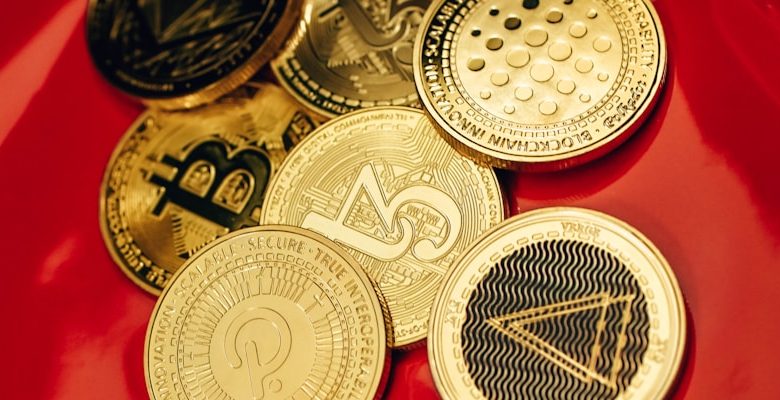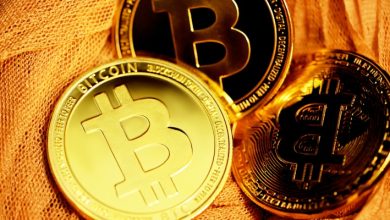How New Tokens Are Shaping the NFT Landscape

- Exploring the impact of new tokens on NFTs
- The role of emerging tokens in revolutionizing the NFT industry
- Breaking down the connection between new tokens and NFTs
- Innovative token models shaping the future of NFTs
- Understanding the tokenization trends in the NFT landscape
- The influence of new tokens on the evolution of NFTs
Exploring the impact of new tokens on NFTs
The introduction of new tokens into the world of NFTs has had a significant impact on how these digital assets are created, bought, and sold. These tokens, which can represent anything from ownership rights to digital art, are changing the landscape of the NFT market in various ways.
One of the key ways in which new tokens are shaping the NFT landscape is by providing more flexibility and utility to NFT owners. By using different tokens, collectors and creators can customize their NFTs to suit their specific needs and preferences. This can include adding extra features, such as access controls or royalties, to the NFT.
Furthermore, new tokens are also enabling the creation of more complex NFTs, such as those that represent real-world assets like real estate or stocks. These tokens are known as “tokenized assets” and have the potential to revolutionize how assets are bought and sold.
The role of emerging tokens in revolutionizing the NFT industry
Emerging tokens play a crucial role in revolutionizing the NFT industry by introducing innovative features and capabilities that enhance the overall user experience. These new tokens bring a fresh perspective to the market, offering unique value propositions that differentiate them from traditional cryptocurrencies.
One of the key ways in which emerging tokens are shaping the NFT landscape is through the integration of smart contracts. These tokens utilize smart contract technology to automate various aspects of the NFT ecosystem, such as minting, trading, and royalties. By leveraging smart contracts, these tokens can streamline processes, reduce transaction costs, and increase transparency for users.
Additionally, emerging tokens are driving the development of decentralized marketplaces for NFTs. These marketplaces operate on blockchain networks, allowing users to buy, sell, and trade NFTs without the need for intermediaries. This decentralized approach not only empowers creators and collectors but also ensures greater security and immutability for NFT transactions.
Breaking down the connection between new tokens and NFTs
In recent years, the rise of new tokens has had a significant impact on the NFT landscape. These tokens, often built on blockchain technology, are revolutionizing the way digital assets are bought, sold, and traded. One of the key connections between new tokens and NFTs is the ability to use tokens as a form of payment for NFT transactions. This seamless integration allows for more flexibility and accessibility in the NFT market.
Furthermore, new tokens are also being used to create unique NFTs that represent ownership of digital assets. By tokenizing assets, creators can easily prove ownership and transfer rights to their work. This added layer of security and transparency is attracting more artists and collectors to the NFT space, driving further innovation and growth.
Another way in which new tokens are shaping the NFT landscape is through the concept of “tokenization.” This process involves converting real-world assets into digital tokens that can be bought, sold, and traded on blockchain platforms. By tokenizing assets, individuals can fractionalize ownership, opening up new investment opportunities and boosting liquidity in the market.
Innovative token models shaping the future of NFTs
As the NFT market continues to evolve, innovative token models are playing a crucial role in shaping its future. These new tokens are revolutionizing the way digital assets are bought, sold, and traded, offering unique features and benefits that traditional tokens do not. By leveraging blockchain technology, these tokens are creating new opportunities for creators, collectors, and investors alike.
One of the most popular innovative token models in the NFT space is the fractionalized ownership token. This type of token allows multiple investors to own a fraction of an NFT, making it more accessible to a wider range of people. By dividing the ownership of an NFT into smaller shares, fractionalized ownership tokens democratize the market and enable more individuals to participate in the NFT ecosystem.
Another emerging token model is the staking token, which allows holders to earn rewards by staking their tokens in a liquidity pool. By incentivizing holders to lock up their tokens, staking tokens help to increase liquidity and stability in the NFT market. This model also encourages long-term holding and reduces the likelihood of quick speculative trading, leading to a more sustainable and healthy market overall.
Understanding the tokenization trends in the NFT landscape
Tokenization trends in the NFT landscape are rapidly evolving, with new tokens being introduced regularly. These tokens play a crucial role in shaping the NFT ecosystem, providing a means for creators to tokenize their digital assets and art. Understanding these trends is essential for anyone looking to navigate the NFT space successfully.
One of the key trends in tokenization is the rise of unique tokens that represent specific digital assets. These tokens are often created through non-fungible token standards like ERC-721 or ERC-1155, allowing for the creation of one-of-a-kind assets on the blockchain. This trend has led to a proliferation of unique NFTs in the market, attracting collectors and investors alike.
Another trend in tokenization is the use of fractionalized tokens, which allow multiple investors to own a fraction of a high-value NFT. This trend has made it easier for individuals to invest in valuable digital assets that would otherwise be out of reach. Fractionalized tokens have opened up new opportunities for democratizing access to the NFT market.
Moreover, the emergence of governance tokens in the NFT landscape has also been a notable trend. These tokens give holders voting rights and decision-making power within NFT platforms and communities. Governance tokens have become a popular way for users to participate in the governance of NFT projects, influencing their direction and development.
Overall, understanding the tokenization trends in the NFT landscape is crucial for anyone looking to engage with NFTs effectively. By staying informed about these trends and adapting to the changing landscape, individuals can make informed decisions about how to participate in the NFT market and leverage the opportunities it presents.
The influence of new tokens on the evolution of NFTs
The introduction of new tokens has had a significant impact on the evolution of NFTs in the digital landscape. These tokens bring a fresh perspective and innovative features that contribute to the growth and development of the NFT market.
One of the key ways in which new tokens influence the evolution of NFTs is through their unique utility and functionality. Different tokens offer various benefits and advantages to NFT holders, such as increased interoperability, enhanced security, and improved scalability. This diversity in token options allows for greater customization and flexibility in NFT transactions and ownership.
Moreover, the introduction of new tokens also fosters competition and innovation within the NFT space. As developers and creators experiment with different token standards and protocols, they push the boundaries of what is possible with NFTs, leading to the creation of more advanced and sophisticated digital assets. This competitive environment drives progress and drives the evolution of NFTs towards new heights.
In addition, new tokens play a crucial role in expanding the reach and accessibility of NFTs to a wider audience. By offering alternative token options that cater to different preferences and needs, more individuals and businesses can participate in the NFT market. This inclusivity promotes diversity and inclusivity in the NFT ecosystem, fostering a more vibrant and dynamic community of creators and collectors.
Overall, the influence of new tokens on the evolution of NFTs is undeniable. These tokens bring fresh perspectives, innovative features, and increased accessibility to the NFT market, driving growth and development in this exciting digital landscape. As new tokens continue to emerge and evolve, the future of NFTs looks promising and full of possibilities.



